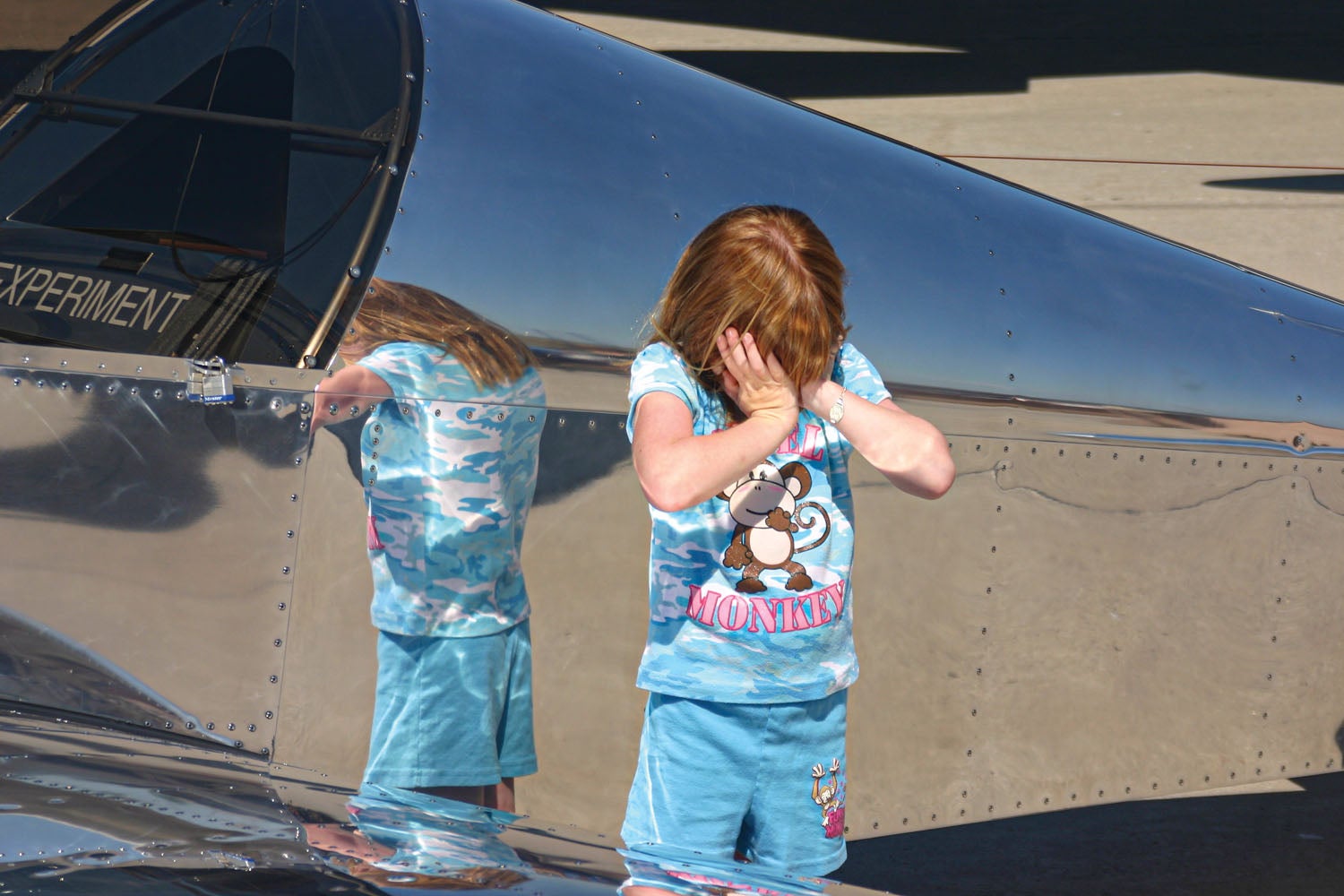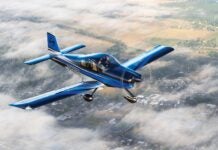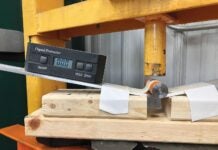To quote a friend, “When you paint, the aircraft will never look better than when it leaves the paint shop. When you polish, it looks better all the time.” There is a catch to that hard truth: Polishing is never done. You may log 200 hours flying the airplane before you lower the polisher, step back and say, “I’m done polishing.”
How you emphasize those words will dictate the future of your finish. You have either entered the maintenance phase, preventing oxidation’s continuous attack on the mirror finish, or you have given up and consigned the polishing effort to lessons learned and time misspent. The thing is, there is only one way to obtain the polished look—and that is to polish. A mirror polish doesn’t come quickly and a poor polish isn’t worth the effort. I polished Metal Illness and never seldom regretted that decision.

A Polishing Primer
Polishing is a low-cost, no weight finish. $100 purchases both the buffer and the polisher I used on Metal Illness. Polish is also inexpensive and, unlike paint, can be bought incrementally. The price of polishing is paid in time and black residue on your skin, floor and clothing. How long it takes to achieve a mirror finish depends on you, but is also dictated by the aluminum alloy being polished.
Aluminum aircraft use primarily two alloys, 2024-T3 and 6061-T6. 2024-T3, an alloy heavy in copper that corrodes easily, is available clad with a thin layer of pure aluminum to protect against corrosion. That layer—called Alclad, a trademark of Alcoa—is shiny and becomes shinier with marginal effort. Iconic travel trailers use 2024-T3 Alclad for their skins. The shiny ones catch our eyes, the dull ones have been neglected. 6061-T6, the alloy used for Metal Illness, drips with magnesium and silicon, making it corrosion resistant. It requires no Alclad protection. It is dullish grey and remains so without significant polishing effort. That’s the bad news. The good news is the alloy is resilient, and once a mirror finish is achieved, it is easily maintained.
Good workmanship, always desirable, is more important if polishing. Dents and scratches can’t be hidden. If you scratch through the Alclad and expose the underlying alloy, you forever increase the polishing workload. Scratches in 6061-T6 can be sanded out without lasting effect, though removing deep scratches sufficiently for polishing is tedious work.
Polishing near paint and graphics can be done without harming them—it takes care—but aggressive polishing will remove the cadmium plating from AN hardware, making it susceptible to corrosion. This isn’t a problem if you keep up with polishing, but if your enthusiasm for polishing wanes, the integrity of the hardware will suffer.
Keeping Up Appearances
Polished surfaces are maintained by preventing dust and dirt, which capture moisture and can scratch the surface, from accumulating. Frequent washing with soap and plenty of water accomplishes this. Fingerprints and palm prints should be removed as soon as possible with spray detailer and a microfiber towel. Carry these to fly-ins, where curious fingers abound.
Waxing or top-coating is not recommended nor needed. Polished surfaces repel water like Huskies shed hair in summer. Wax will dull the finish by placing a non-reflective layer over the reflective surface. The wax also gets in the way when additional polishing is necessary.
The interval between maintenance polishing depends on too many factors to define. After you’ve achieved a mirror finish, upkeep is easy if you keep the airplane clean and remove bugs and bird droppings quickly. I massaged Metal Illness with Zephyr Pro-40 once a year to remove oxidation. I could complete the task in a weekend.
Reflections
A polished airplane presents a hazard some never consider; they cloak themselves in their surroundings. They reflect the hangar door, the green grass or grey tarmac they’re parked on and the blue sky above them. Owners of polished airplanes should always assume their aircraft are invisible to other vehicles, on the ground and in the air.
There is something—I’ll call it “unpleasant”—about lying on your back pressing a polisher against a fuselage bottom, a surface that is always too close or too far away for your arms and eyesight. But there is also something about flying at 8500 feet agl with a dot of focused light following your path across the ground. That dot is the setting sun reflecting off the bottom of polished wings. There are three ways to address the bottom of a polished airplane: suck it up and polish; ignore the bottom, no one sees it; or paint it silver. The bottom of the wings and horizontal stabilizer of many polished warbirds are in fact painted silver.
A question I’m asked is: Does the reflecting sun blind you? I have never been blinded or bothered by a glare while flying. In the rare case a glare developed, a slight change in direction (like a roll or a wingover) would disrupt the reflection’s geometry, eliminating it. However, I did learn a painful lesson about reflected ultraviolet. On a flight from Oshkosh to Lakeland, I was southbound in a sunny sky for 8 hours. The next day my eyes itched as if they were seasoned with fresh ground pepper. I could barely stand exposure to light. I had sunburned my eyes. After that I wore wrap-around sunglasses while flying because open-sided aviator-style glasses let reflected UV reach my eyes.
The same aesthetic that draws us to the decision to polish also draws others to the polished airplane. Fingertips will be dragged across the leading edge. Knuckles will be pounded on the shiny skins. Sweaty palm prints will etch themselves into the turtledeck. Belt buckles will graze the side of the fuselage. Unattended children will do far worse than that. You’ve been warned. Which brings up another question I’m asked: Would I polish again? Yes, in a second, and for many, many, hours.













